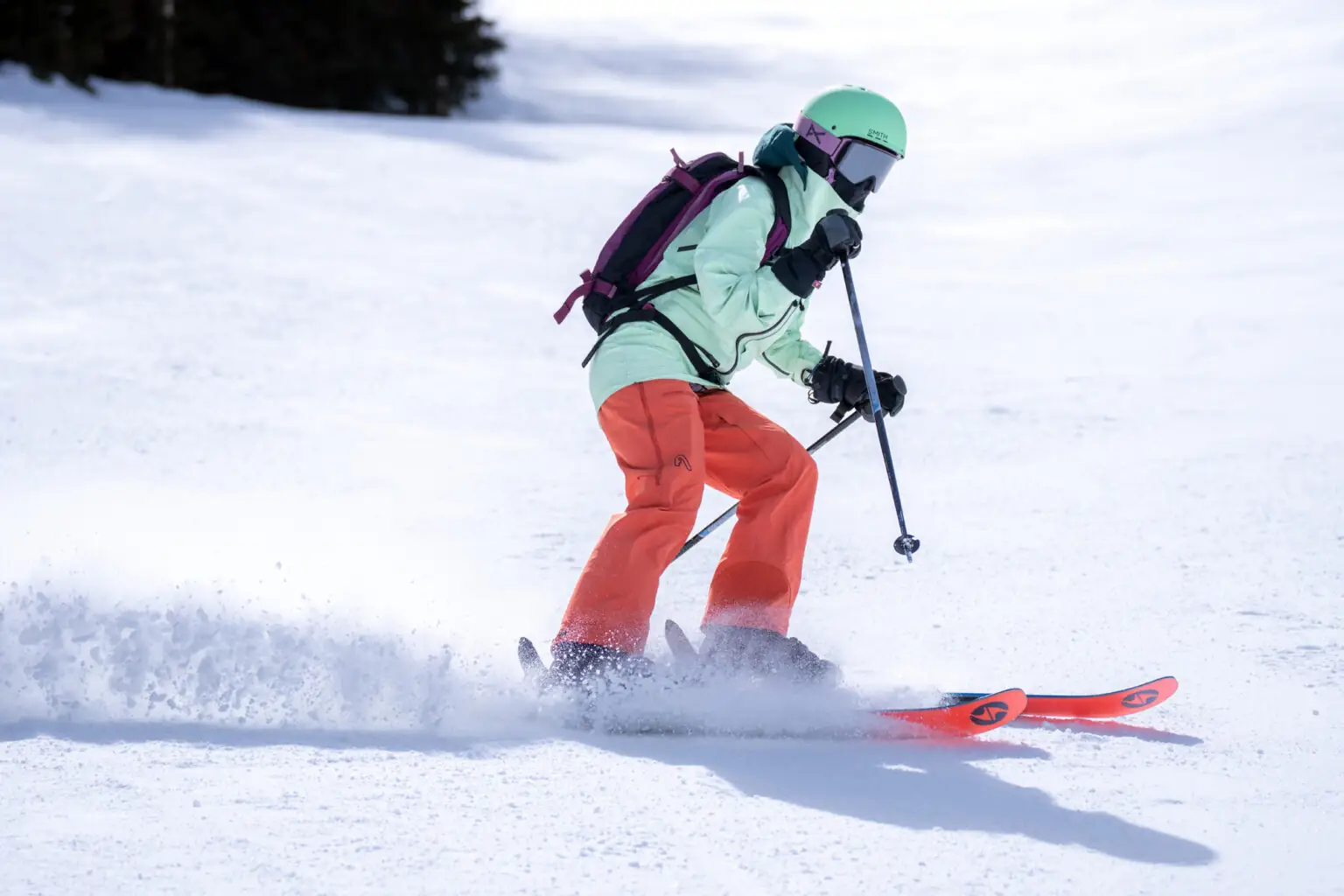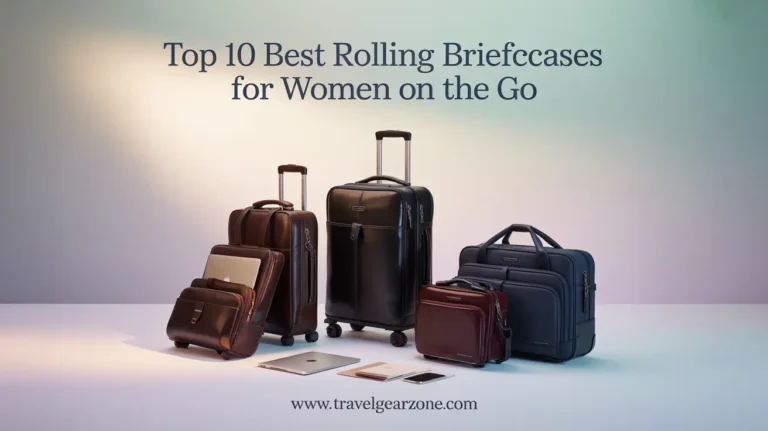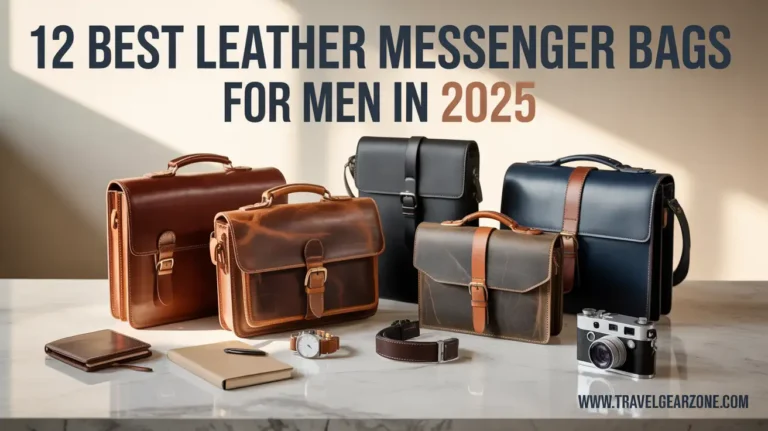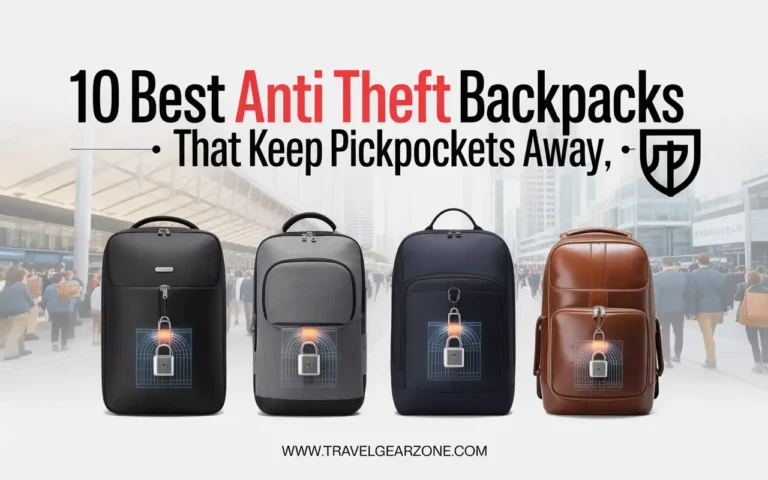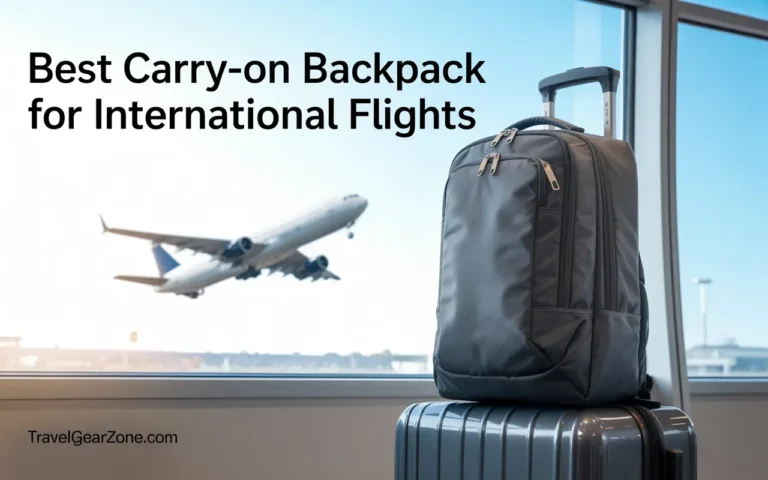10 Best Ski Backpacks for Every Snow Adventure
So, picture this: you’re halfway up a snow-covered ridge, wind biting your face, and your backpack… feels like it’s trying to wrestle you back downhill. Happens more often than you’d think. Finding the Best Ski Backpacks? It’s a mix of comfort, design, and not losing your goggles somewhere deep in an unmarked zipper pocket.
I’ve been out there—resort days, powder hikes, bad weather, broken buckles. I’ve also tried packs that felt like magic. That one trip to Lake Louise, I swear I found the perfect ski gear bag… until the waist strap froze shut.
This list isn’t about “the one perfect backpack” (that’s a myth, sorry). It’s about options that actually work—whether you’re just sliding around local slopes or heading into avalanche territory with the crew.
Discovering 10 of the Best Ski Backpacks for Every Snow Adventure
Hydration, gear loops, airbag compatibility, durable materials… I’ve included it all. You’ll find ski packs here that flex with your snow habits, not fight them.
1. Black Diamond JetForce Pro Avalanche Airbag Backpack
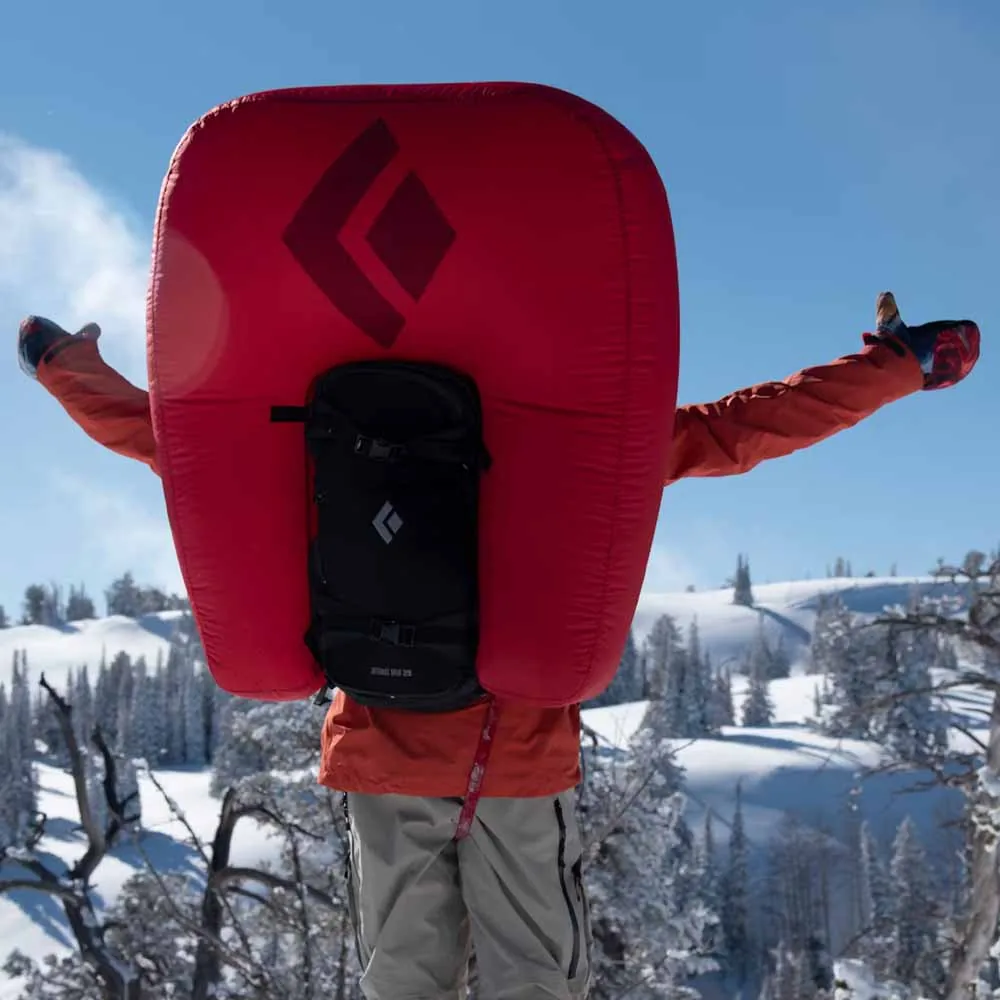
This one’s the tech-head’s dream. It’s not just an avalanche airbag backpack—it’s rechargeable. The JetForce Pro uses a battery-powered fan system that inflates the airbag multiple times, so you can practice or recover from a real slide and not stress over refills.
It’s heavy, yeah, but thoughtfully laid out. There’s a dedicated avalanche gear compartment, and the ski carry system works with both A-frame and diagonal setups. Plus, the back panel access keeps your stuff reachable without dumping it all in the snow.
Pro/Con Table:
| Pros | Cons |
|---|---|
| Reusable electric airbag system | Expensive, especially for casual users |
| Durable materials and premium finish | Heavier than average ski packs |
| Smart layout for avalanche tools | Fan is a bit loud during deployment |
| Compatible with modular add-ons | Battery care needed in extreme cold |
💰 Price Range: $1,200–$1,400
🛍️ Where to Buy: Black Diamond website, REI, Backcountry, Evo
2. Osprey Kamber (Men’s) / Kresta (Women’s) 32L – Resort & Day Touring MVP
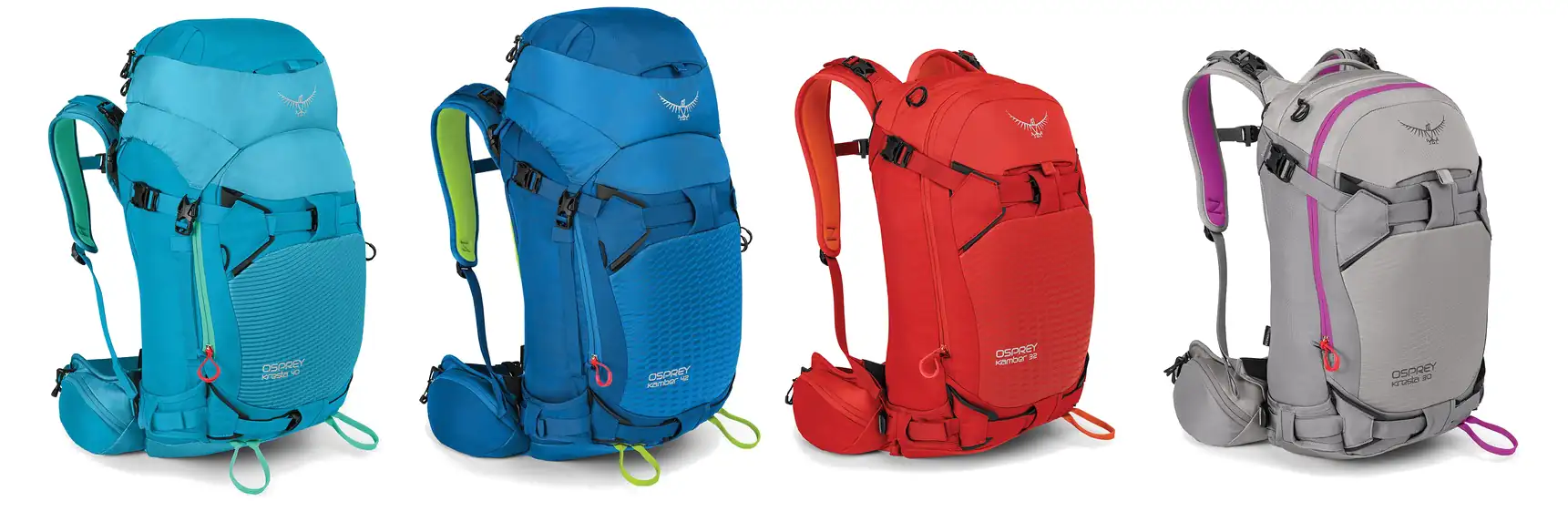
You want something between “I carry nothing” and “I’m ready for the apocalypse”? This is it. The Kamber/Kresta 32 hits the sweet spot for resort days and light ski touring. No avalanche airbag, but everything else? Nailed.
You get a helmet holder, padded goggle pocket, hydration sleeve, and a backpanel entry system that’s just… smart. Feels like Osprey actually went skiing before designing it. Also, the hip belt is wide and comfy—it actually feels good when loaded up.
Pro/Con Table:
| Pros | Cons |
|---|---|
| Great fit and back ventilation | Not the lightest for its size |
| Women-specific fit on Kresta | Lacks airbag compatibility |
| Sturdy, weather-resistant build | May feel bulky for resort-only use |
| Intuitive pocket layout | Hip belt might ride up on smaller frames |
💰 Price Range: $180–$220
🛍️ Where to Buy: Osprey.com, REI, Moosejaw, Amazon
3. Patagonia SnowDrifter 28L – Lightweight & Eco-Friendly
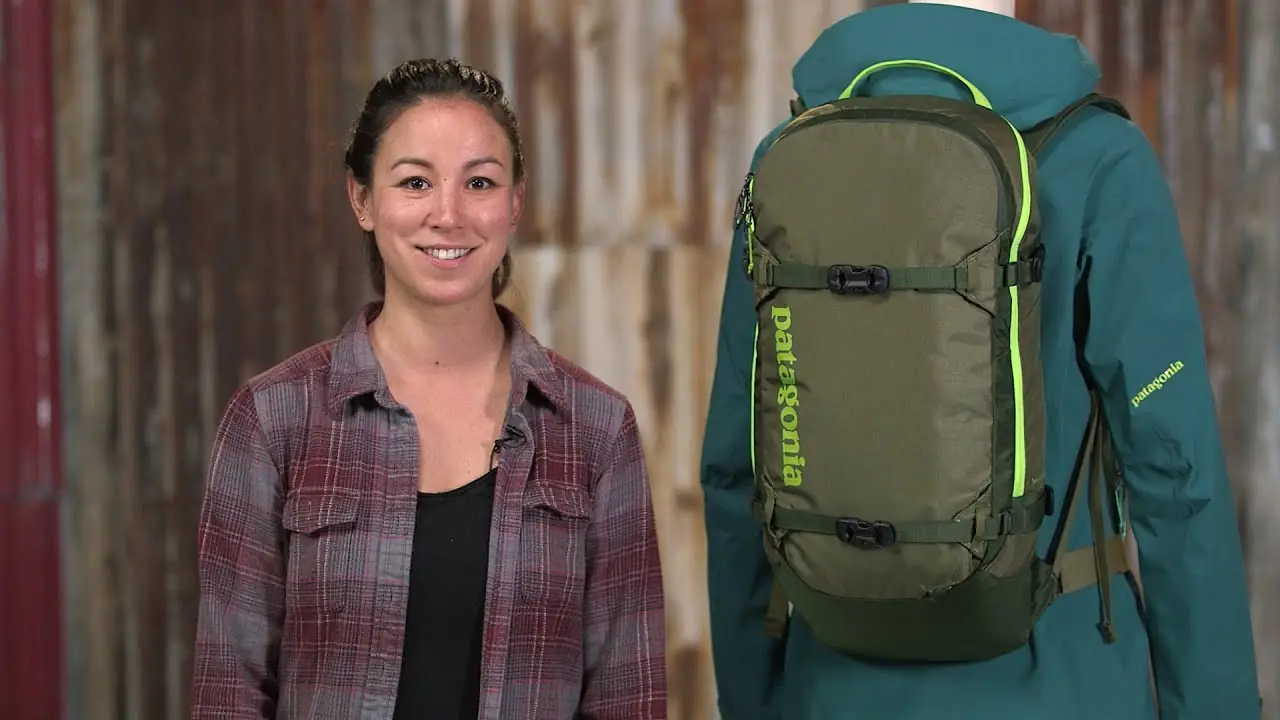
Light, minimal, and doesn’t look overly “gearhead.” That’s the SnowDrifter. Patagonia built it with recycled materials, but didn’t skimp on the essentials. It’s hydration-ready, carries skis/snowboard, and has a nice flexible frame that adapts to your body.
You’re not getting airbag tech or a ton of padding—but if you’re all about weight savings and care about sustainability, this pack’s a winner.
Pro/Con Table:
| Pros | Cons |
|---|---|
| Lightweight and packable | Not ideal for multi-day tours |
| Eco-conscious design with recycled fabric | Waist belt lacks structure |
| Simple, streamlined compartments | Minimal padding in shoulder straps |
| Fits well for both men and women | Not waterproof—needs dry bag inserts |
💰 Price Range: $150–$180
🛍️ Where to Buy: Patagonia.com, Backcountry, REI
4. Dakine Drafter 30L – Snowboarder’s Best Friend
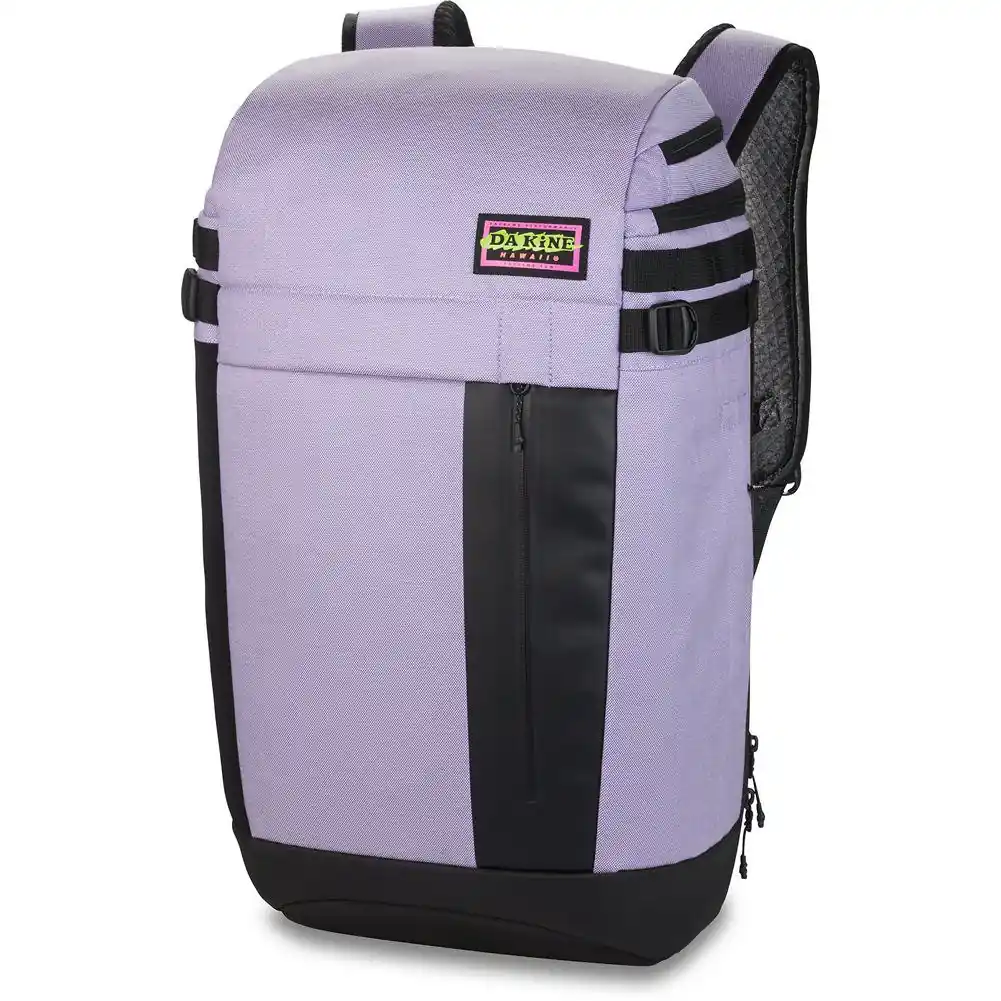
More snowboard-centric, the Drafter 30L blends comfort with a stable, bounce-free carry. If you’re hucking cliffs or just slashing side hits near the trees, it won’t shift around or throw you off balance.
Board carry straps work well both vertically and horizontally, and there’s a deployable helmet holder too. Interior space is roomy, with well-placed pockets for avalanche tools, snacks, GoPro… you name it.
Pro/Con Table:
| Pros | Cons |
|---|---|
| Secure, stable snowboard carry | No avalanche airbag integration |
| Excellent airflow and back comfort | Slightly bulky for minimalist riders |
| Smart, intuitive pocket layout | Water-resistant, not waterproof |
| Great for freestyle and resort riders | Some features unnecessary for skiers |
💰 Price Range: $130–$160
🛍️ Where to Buy: Dakine.com, REI, Backcountry, Evo
5. Thule RoundTrip Boot Backpack 30L – Dedicated Boot Hauler & Gear Organizer
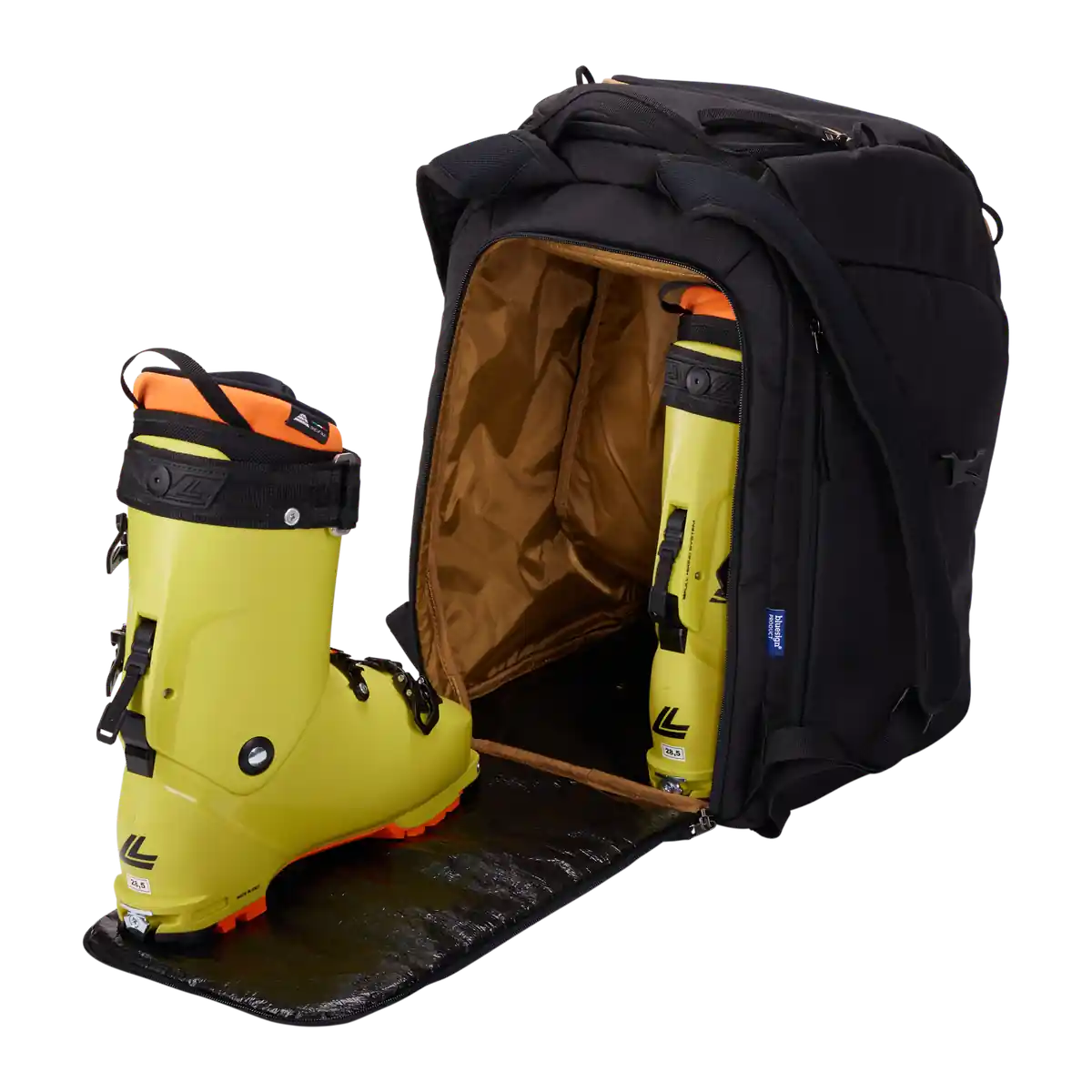
This pack is basically a travel buddy who’s way more organized than you are. It’s engineered to carry ski or snowboard boots on the side, with internal straps to secure them.
Plus, there’s room for outerwear, goggles, tools—you name it. Durable shell, tough there’s some bulk.
Pro/Con Table:
| Pros | Cons |
|---|---|
| Dedicated boot storage keeps crunch mess separate | Small rip‑stop fabric panel may catch on gear |
| Robust and durable—built to last travel abuse | Not hydration compatible |
| Top grab handle = easy haul from car/airport | Weighty even when empty |
| Multiple gear compartments = great organization | No waist belt, so heavy loads feel awkward |
Price Range: $199–$219
Where to Buy: Thule’s website, REI, Backcountry
6. Ortovox Haute Route 40 – Technical Alpine Tourer
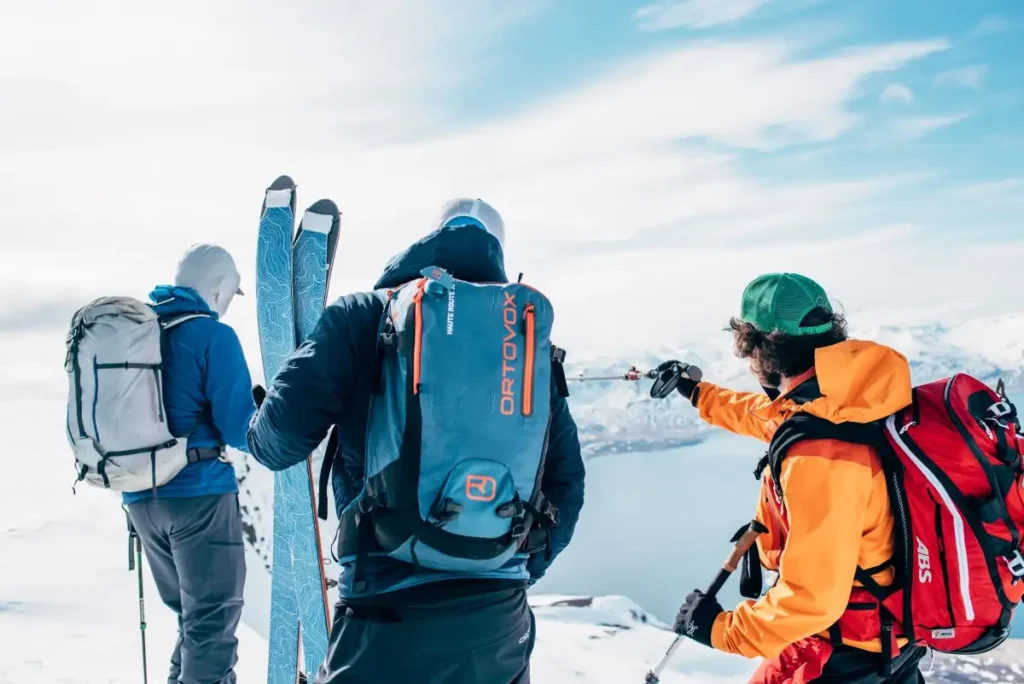
If you’re serious about backcountry—like glacier travel or multi-day ski mountaineering—this is your pack. It’s big enough for overnight gear, avalanche tools, crampons, and still has deluxe features like a detachable daypack.
The avalanche beacon pocket is clever, and the gear loops are—honestly—well thought out.
Pro/Con Table:
| Pros | Cons |
|---|---|
| Modular daypack detaches for short missions | Pricey—plus taxes in Europe or U.S. import fees |
| Robust straps for skis, board, ice axe, ropes | Heavy compared to simple daypacks |
| Excellent ventilation even when loaded | Might be overkill for resort days |
| Beacon pocket sits above waist belt—easy access | Learning curve to use all its features |
Price Range: €299–€319 (~$320–$340)
Where to Buy: Ortovox dealers, Amazon, local alpine shops
7. Deuter Freerider Pro 34+ – Snow-Ready With Airbag Compatibility

Here’s a good one for wintersport lovers who want safety and comfort without going full avalanche-hotshot. This pack comes with a removable airbag Y-system (airbag slider sold separately), plus foam padding, hydration bladder sleeve, and solid gear loops. Stylish, low-profile, but burly.
Pro/Con Table:
| Pros | Cons |
|---|---|
| Airbag-ready layout—easily add safety upgrade | Airbag sold separately—add $200–$300 |
| Very ergonomic fit, lots of padding | Zippers could be better sealed |
| Adjustable lid for mid-size loads | Requires practice to pack effectively |
| Plenty of tool loops, pockets, and stash space | Slightly tight side straps for wide skis |
Price Range: $240–$260 (plus airbag system)
Where to Buy: Deuter.com, REI, Moosejaw
8. CamelBak SnoBlast 8L – Hydration Pack & Snow Day Essential
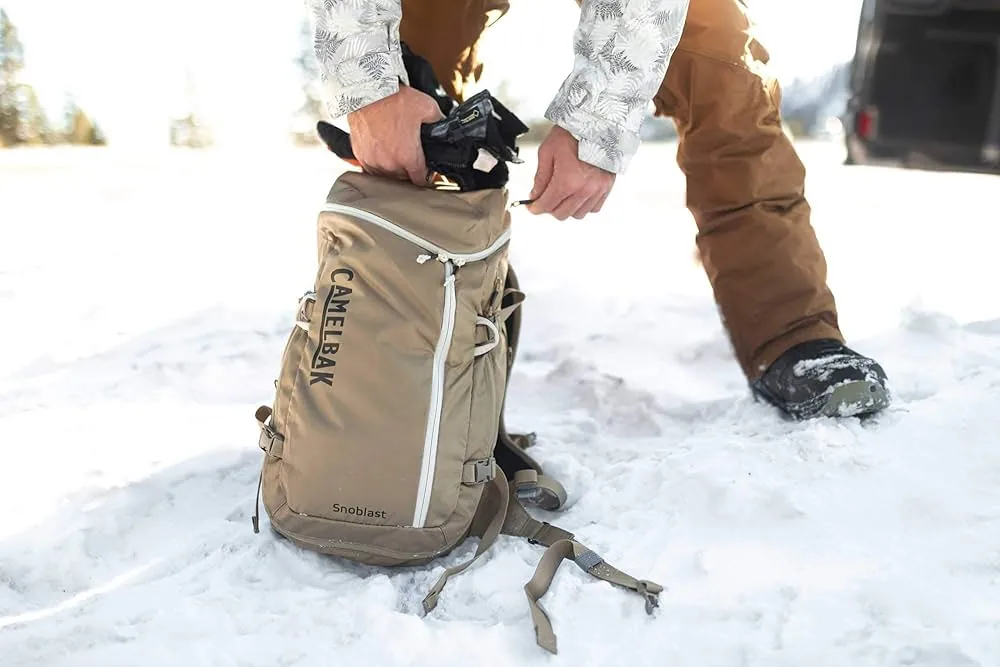
Short ski days, cardio laps, skinning workouts—this is the grab-and-go. It’s not for deep powder trips, but the insulated hydration sleeve, small gear pockets, and warming vent panels make it feel smartly tailored. Lightweight, breathable, and kinda fun to use.
Pro/Con Table:
| Pros | Cons |
|---|---|
| Insulated hydration for 3L bladder | Too small for full touring kit |
| Breathable back panel—no sweat trap | Hydration only—no ski/board carry |
| Sternum strap with integrated safety whistle | Not avalanche airbag capable |
| Light (~1 lb) and agile for movement | Minimal storage—no helmet holder |
Price Range: $150–$160
Where to Buy: CamelBak.com, REI, local bike/skate shops
9. Evoc Line Pro 30L – Backcountry Performance with Airbag Ready
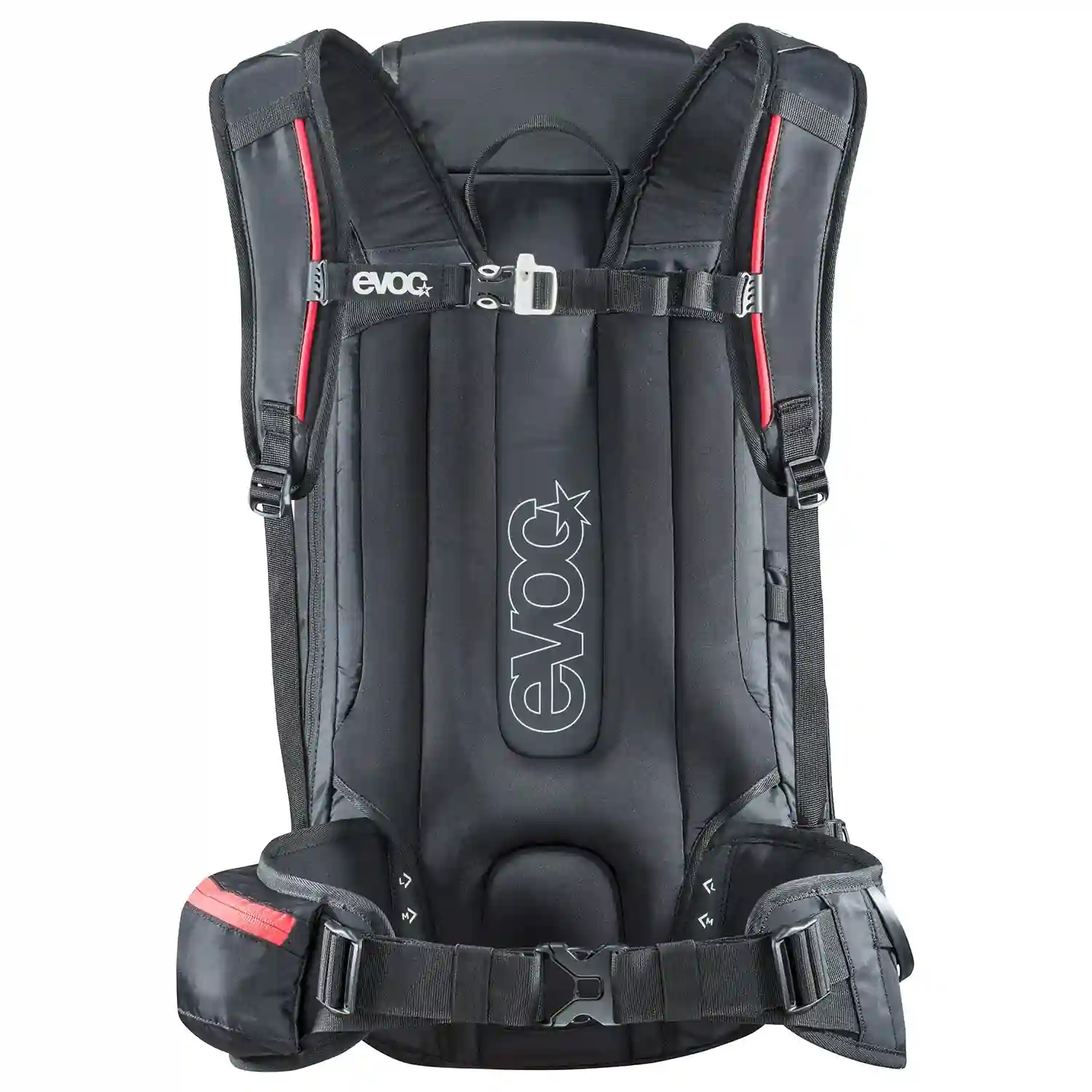
This one’s like the Deuter, but with extra polish and smoother lines. Airbag-ready, ski/board carry, tool innovation (the evacuation hose on the Y-split), and a padded wrap-around belt that’s comfy even when loaded. It’s athletic, packed with features, and not too loud about them.
Pro/Con Table:
| Pros | Cons |
|---|---|
| Sleek and sporty—no flappy straps | A bit narrow for wide touring skis |
| Airbag-ready without being bulky | Airbag not included—add ~$350–$400 |
| Well-ventilated harness system | Sits high on the back—might not suit all |
| Good access to tool compartments | Pricier than similar-sized packs |
Price Range: $310–$330 (without airbag)
Where to Buy: Evo, Backcountry, Evoc website
10. REI Co-op Powder Pulse 22L – Budget-Friendly All-Rounder
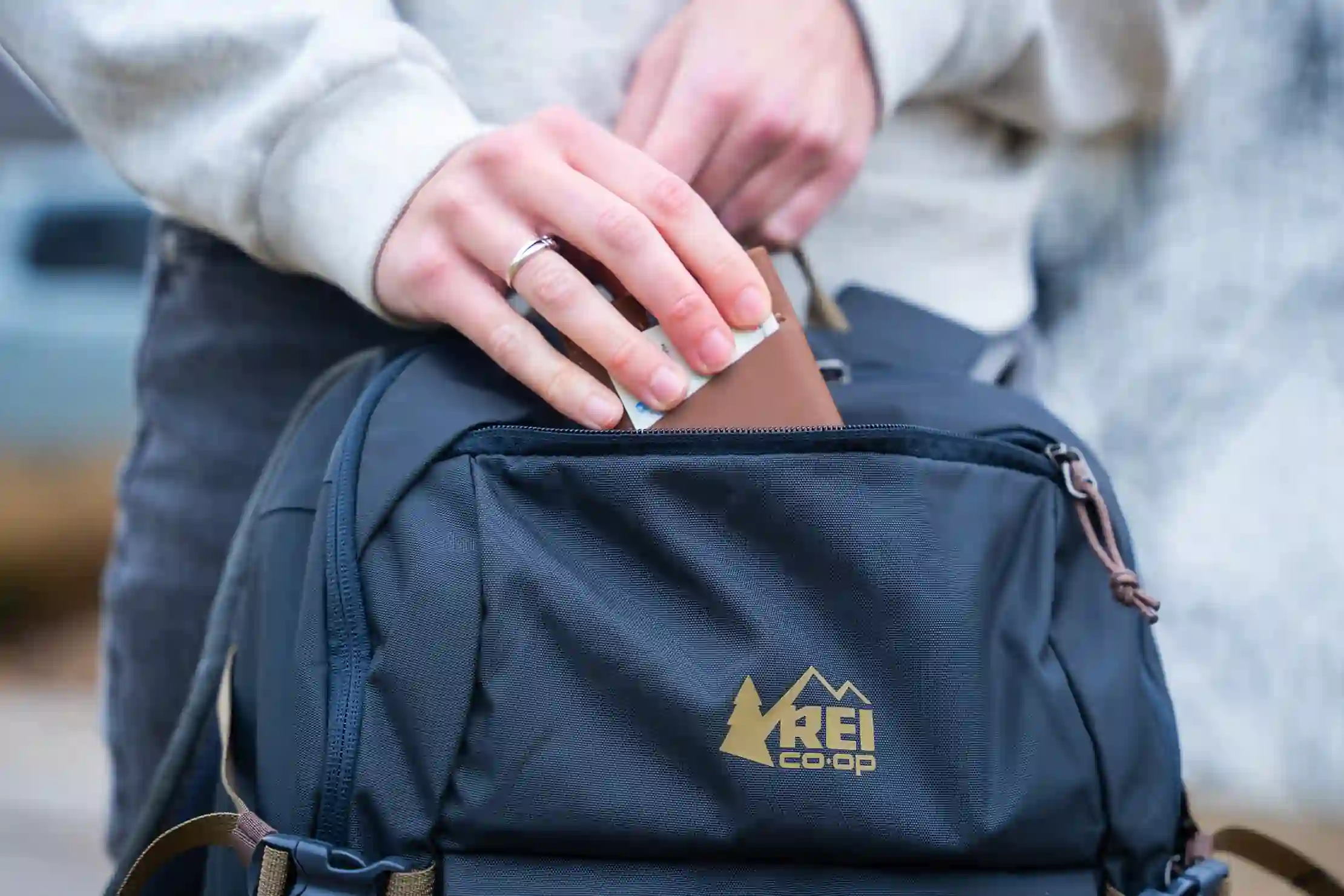
Okay, budget alert. You don’t need to break the bank to get a decent ski daypack, and the Powder Pulse is proof. It’s got ski carry, hydration sleeve, helmet loop, basic tool pockets, and REI’s semi-waterproof laminated fabric. Nothing fancy, but reliable—and the price is nice.
Pro/Con Table:
| Pros | Cons |
|---|---|
| Affordable (~$89) for a fully featured pack | No airbag option or high-end materials |
| Clean layout—easy to access goggles/pack | Padding’s decent but not top-tier |
| REI warranty = good for peace of mind | Less breathable than premium packs |
| Casual, unassuming look | Might not survive mega-slams |
Price Range: $89–$99
Where to Buy: REI, REI.com
Final Thoughts
So, yeah, that’s the lineup. From rechargeable airbag tech to do‑everything daypacks, and even a wallet-friendly option that still carries the essentials.
No perfect ski pack exists—you trade weight for features, comfort for price, that sort of thing. Pick what aligns with your snow routine (and wallet).
Let the pack meet your tempo. Whether you’re skinning laps at dawn or schussing groomers in the afternoon, choose the one that sorta fits your rhythm. If you’re still on the fence, just ask—the next wave of gear is always waiting.
Pros Tips ⚡
- Fit check: Wear gloves, jacket, pack it, then tighten waist and chest straps. Move around. If it rides up, try a different size.
- Layer smart: Liner gloves, sunglasses, snacks—pack accessible pouches near the top. And put wet gloves in the helmet pocket if there’s one.
- Maintenance lowdown: Zip dry after ski days to prevent salt build‑up. And treat waterproof zips with silicone spray once a season.
- Airbag reality: Airbag packs aren’t toys—attend a quick demo class or at least watch a training video. You’ll pack it better and deploy instinctively when it counts.
Frequently Asked Questions
1. Do I really need an avalanche airbag backpack?
Maybe. If you’re heading into terrain with avalanche risk, it’s worth considering. But if you just ski groomers? Not necessary.
2. Can these packs carry snowboard gear?
Yup—especially models with horizontal straps or dedicated board loops like the Dakine Drafter or Evoc Line Pro.
3. Are hydration bladders essential?
Honestly, yes. Staying hydrated helps with fatigue—and they’re easy to fit in most ski packs. Just drain & dry them after.
4. What size should I pick?
Most people find 25–35 L sweet for day missions. 40+ L is good for overnighters or really long tours.
5. How do I clean a ski backpack?
Gentle cycle in a washing machine with mild detergent, then air-dry. Clean zippers after each trip and treat them with waterproofing spray occasionally.
6. Should I upgrade to airbag later if I buy a non-airbag pack?
Depends—some models are airbag-ready (Deuter, Evoc), so you can add one later. Good to know before you buy.
7. Is waterproof fabric worth it?
Waterproof fabric saves you from snow melt—but zippers are the real issue. If they’re not sealed, use stuff sacks inside.
8. How do I test the airbag without wasting canisters?
Practice with an electric or reusable airbag system, or attend a gear demo. If you must use a canister, do it in controlled settings only.
9. Can I check these packs at airports?
Most fit airline carry-on dimensions when empty—but if it’s packed, check with airlines or use lockable straps.
10. What if I wear the pack all day—will I get sweaty?
Look for padded, mesh back panels and hip belts with ventilation (like Osprey, Deuter, Evoc). Then toss in moisture-wicking clothing underneath.

